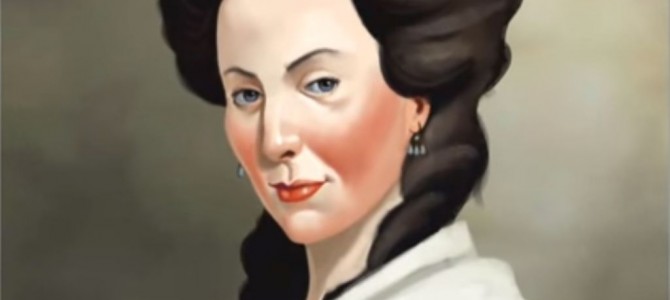Born in Antigua, British West Indies in 1722, Eliza Lucas was a precocious young woman whose life embodies that of the republican mothers who founded this great nation. At only 15 years old she accompanied her family to colonial South Carolina, where, upon his death, her grandfather John Lucas had left the family three plantations.
Immediately upon arrival Eliza took it upon herself to run the household, as the eldest of four children with a very sick mother. Additionally, using her London-based boarding school education and innate curiosity, she took to botany as her preferred subject of study and pastime.
At the young age of 16, Eliza became responsible for the daily operations of all three South Carolina Lucas plantations, due to her father’s unexpected return to Antigua, where he was appointed lieutenant governor of the island. Her plantations came with the production of timber, tar, rice, and various other crops cultivated by the hard work of her slaves and an African indigo-maker from Montserrat.
A Young, Savvy Entrepreneur
Luckily for the new colonies and British royalty, Eliza realized that the growing textile industry had created new world markets for dye, and her passion during her sixteenth year became curating indigo, a plant that had previously failed to grow in the colonies. After three years of persistence, and many failed attempts, indigo was successfully grown on the primary Lucas plantation.
Combining her ingenuity, hard work, family loyalty, and prudence about future economic growth—and potential independence of the Americas—Eliza decided to share her successful indigo strains with other South Carolina planters. Expanded indigo production realized extremely competitive profits for the new colonial planters.
Indigo alone created an export cash crop that before the Revolutionary War accounted for one-third of the new colonies’ total value. In just three short years, indigo went from nonexistent in the Americas to being South Carolina’s second-largest cash crop after rice. It is estimated that within two years indigo exports from the Charleston (Charles Town) area grew from 5,000 pounds to 130,000 pounds.
Although through her letterbooks and correspondence with her beloved father it is clear Eliza preferred business life to marriage, she willingly married Charles Pinckney in her 20s. While he was an older man—South Carolina’s first native attorney—Pinckney adored Eliza’s nature and found her the ideal companion after his first wife’s passing. Charles Pinckney encouraged her planting of magnolias, oaks, and indigo during his frequent travels, and her continued correspondence with British botanists and scientists while she raised children.
Her Children, Another Lasting Legacy
Eliza gave birth to four children (three boys and one girl), losing one son shortly after his birth. Subscribing to the theories of John Locke, she strived for as much early education and scientific learning as possible for all of her children. Her writings suggest at times she struggled with the public versus private ideals of gender roles of her day, knowing that without her business, scientific, and legal expertise her plantations would not have succeeded, yet deeply valuing her devotion to the role of a good wife and mother.
After 14 years of marriage, Charles Pinckney contracted malaria and passed away, leaving Eliza to run the family, various plantations, and his political agenda. Doing so, she not only continued family traditions, but also maintained her deep dedication to her children and work through education, political activities, and support of free colonies. Her commitment to education, business, and freedom led George Washington himself to volunteer as a pallbearer in her 1793 funeral.
Eliza’s surviving children, Charles Cotesworth, Thomas, and Harriott all went on to be testaments to their mother’s accomplishments and spirit in revolution, politics, education, and large southern families. Most noteworthy were the great successes of her two sons who served as Federalist vice-presidential candidates, both running alongside John Adams. One signed the U.S. Constitution. Both sons also negotiated treaties on behalf of the new nation as diplomats.
While Thomas became a governor of South Carolina, it was Charles Cotesworth who signed the U.S. Constitution and worked side-by-side with President George Washington.
Although her gravestone notes she was the “Mother of two South Carolina signers of the Declaration of Independence,” it was actually her one son and a nephew who signed the U.S. Constitution. South Carolina has also named a National Wildlife Refuge off Hilton Head Island in their honor, on the very land of one Lucas plantation, and posthumously appointed Eliza as the first woman in the South Carolina Business Hall Of Fame.
Further Recommended Reading
- “Letterbook of Eliza Lucas Pinckney,” 1739-1762 (Here)
- “Charleston In The Age Of The Pinckneys” (Here)
- “Water To My Soul: The Story Of Eliza Lucas Pinckney,” historical fiction (Here)
- Fun Facts of Eliza Lucas Pinckney (Here)









